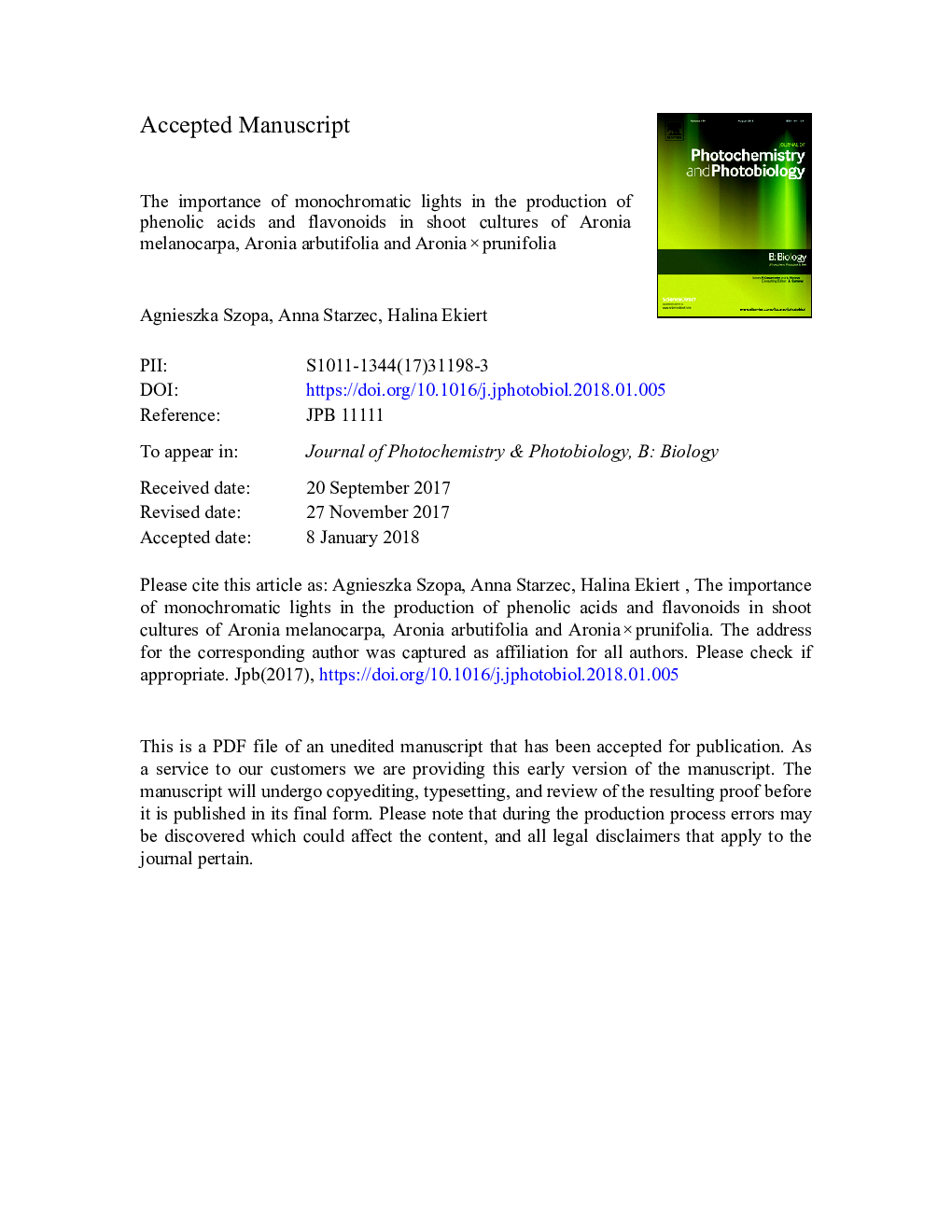| Article ID | Journal | Published Year | Pages | File Type |
|---|---|---|---|---|
| 6493384 | Journal of Photochemistry and Photobiology B: Biology | 2018 | 23 Pages |
Abstract
Shoot cultures of Aronia melanocarpa, A. arbutifolia and A.â¯Ãâ¯prunifolia were maintained on Murashige and Skoog medium with 1â¯mg/l each of BA and NAA under monochromatic lights (far-red, red, blue lights, UV-A-irradiation), in darkness, and under white light (control). HPLC-DAD analyses of 19 phenolic acids and 11 flavonoids in methanolic extracts from the shoots revealed in all of them the presence of three depsides (chlorogenic, neochlorogenic and rosmarinic acids), protocatechuic acid, four flavonoid glycosides (cynaroside, quercitrin, hyperoside and rutoside), and additionally, in A. arbutifolia, 3,4-dihydroxyphenylacetic acid. Depending on light quality, the total amounts of these metabolites increased 1.8-5.9 times, reaching maximum values under blue light: 527.40 and 144.61â¯mg 100â¯gâ1 DW (A. melanocarpa), 543.27 and 85.82â¯mg 100â¯gâ1 DW (A. arbutifolia) and 1615.18 and 220.65â¯mg 100â¯gâ1 DW (A.â¯Ãâ¯prunifolia), respectively. The maximum total amounts were 1.3-3.6 times higher than under white light. The quantities of individual metabolites changed from 1.2 to 11.0 times, with high amounts of neochlorogenic acid and quercitrin in A. melanocarpa (243.35 and 75.64â¯mg 100â¯gâ1 DW), and of chlorogenic and rosmarinic acids and quercitrin in A. arbutifolia (236.52, 219.35 and 51.01â¯mg 100â¯gâ1 DW). Extremely high amounts of depsides (418.83, 644.68, 548.86â¯mg 100â¯gâ1 DW) and quercitrin (165.88â¯mg 100â¯gâ1 DW) were produced in cultures of the hybrid - A.â¯Ãâ¯prunifolia. The results are potentially useful for practical applications. This is the first report documented the importance of light quality on the production of phenolic acids and flavonoids in three aronia in vitro cultures.
Keywords
Related Topics
Physical Sciences and Engineering
Chemical Engineering
Bioengineering
Authors
Agnieszka Szopa, Anna Starzec, Halina Ekiert,
